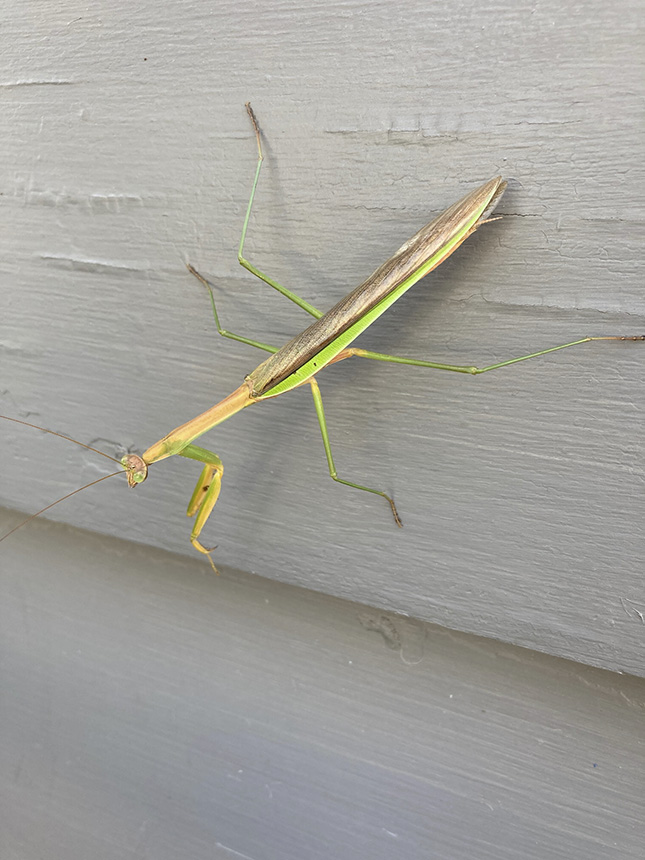
There are only two species of praying mantis in Minnesota, Chinese mantis and European mantis. Neither is native to North America. The most common by far is Chinese mantis (Tenodera sinensis sinensis). It is native to Japan, China, North and South Korea, Thailand, and Micronesia. It was accidentally introduced in Philadelphia in 1896. It is now common in the United States and southern Canada east of the Great Plains, in California west of the Rocky Mountains, and in most of Asia. It is uncommon in the southern third of Minnesota, where it is at the northwestern extent of its range, and is absent from the remainder of the state. It is found in grasslands, meadows, agricultural fields, and woodlands, and at the sides of streams and rivers.
Chinese mantis are large predaceous insects. They eat anything they can catch, including insects, small amphibians and reptiles, and hummingbirds. They remain stationary with their legs raised up as they wait for prey. Though they have wings, females do not fly. Males can fly only short distances. Adults are active in summer until fall, when they are killed by the first frost.
Chinese mantis is distinguished from European mantis by its larger size, the pattern of stripes and shape of plates on the face, a bold green stripe along the edge of the forewing, and a yellow spot between the front legs.

This is good. Pest control is essential nowadays. Thank you for sharing this post, and looking forward to the latest one.